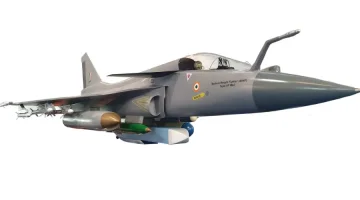- Views: 2K
- Replies: 10
India's Defence Research and Development Organisation (DRDO) is in advanced preparations for the second flight test of its indigenously developed Long-Range Land Attack Cruise Missile (LRLACM).
This upcoming trial is a crucial step towards the operational deployment of the missile and the fulfillment of a planned procurement order valued at approximately ₹14,000 crore by the Indian Armed Forces.
The missile successfully completed its inaugural test on November 12, 2024, from the Integrated Test Range (ITR) in Odisha. The LRLACM is designed to provide India with a significant strategic advantage, capable of launching stealthy, high-precision strikes on land-based targets from a distance of up to 1,500 kilometres.
Developed as a high-priority "Mission Mode Project," the LRLACM marks a substantial advancement in India's missile capabilities. The primary design and development were led by the Aeronautical Development Establishment (ADE) in Bengaluru, with vital support from other DRDO labs and key public sector undertakings like Bharat Dynamics Limited (BDL) and Bharat Electronics Limited (BEL).
The missile, an advanced variant of the existing Nirbhay class, can be armed with either conventional or nuclear warheads, offering critical flexibility for various combat scenarios. Weighing around one tonne with a length of six metres, it is specifically engineered to destroy high-value strategic targets with accuracy.
During its maiden flight, the missile demonstrated sophisticated performance by navigating a pre-planned route using waypoints and executing complex manoeuvres at different speeds and altitudes.
The test, launched from a ground-based mobile launcher, was meticulously tracked by radar and electro-optical systems, successfully meeting all primary objectives.
A key feature of the LRLACM is its versatility; it can also be fired from universal vertical launch modules installed on frontline naval warships, extending its operational utility across different branches of the military.
The LRLACM's tactical strength lies in its ability to fly at subsonic speeds while hugging the terrain, a feature that allows it to remain undetected by enemy radar systems for most of its flight path. This makes it a cost-effective and reliable weapon for long-range engagements.
Its capabilities are often compared to globally recognised systems like the U.S. Tomahawk and Russia's Kalibr cruise missiles.
The missile complements the supersonic BrahMos by offering a longer-range, subsonic option, thereby strengthening India’s strategic deterrence and national defence posture.
Reflecting its importance, the Indian Air Force and the Indian Army have already received initial approval, known as the Acceptance of Necessity (AoN), for its procurement. The planned orders are estimated to be worth ₹10,000 crore from the Air Force and ₹4,000 crore from the Army.
Following the first successful test, Defence Minister Rajnath Singh stated that the achievement sets the stage for the future development of indigenous cruise missile systems.
Dr. Samir V. Kamat, the Chairman of DRDO, also commended the project team, emphasising the missile's contribution to India's goal of self-reliance under the 'Aatmanirbhar Bharat' initiative.
The missile's recent display at the DEFEA 2025 exhibition in Athens, Greece, has further highlighted India's growing expertise in advanced defence technology to a global audience.

